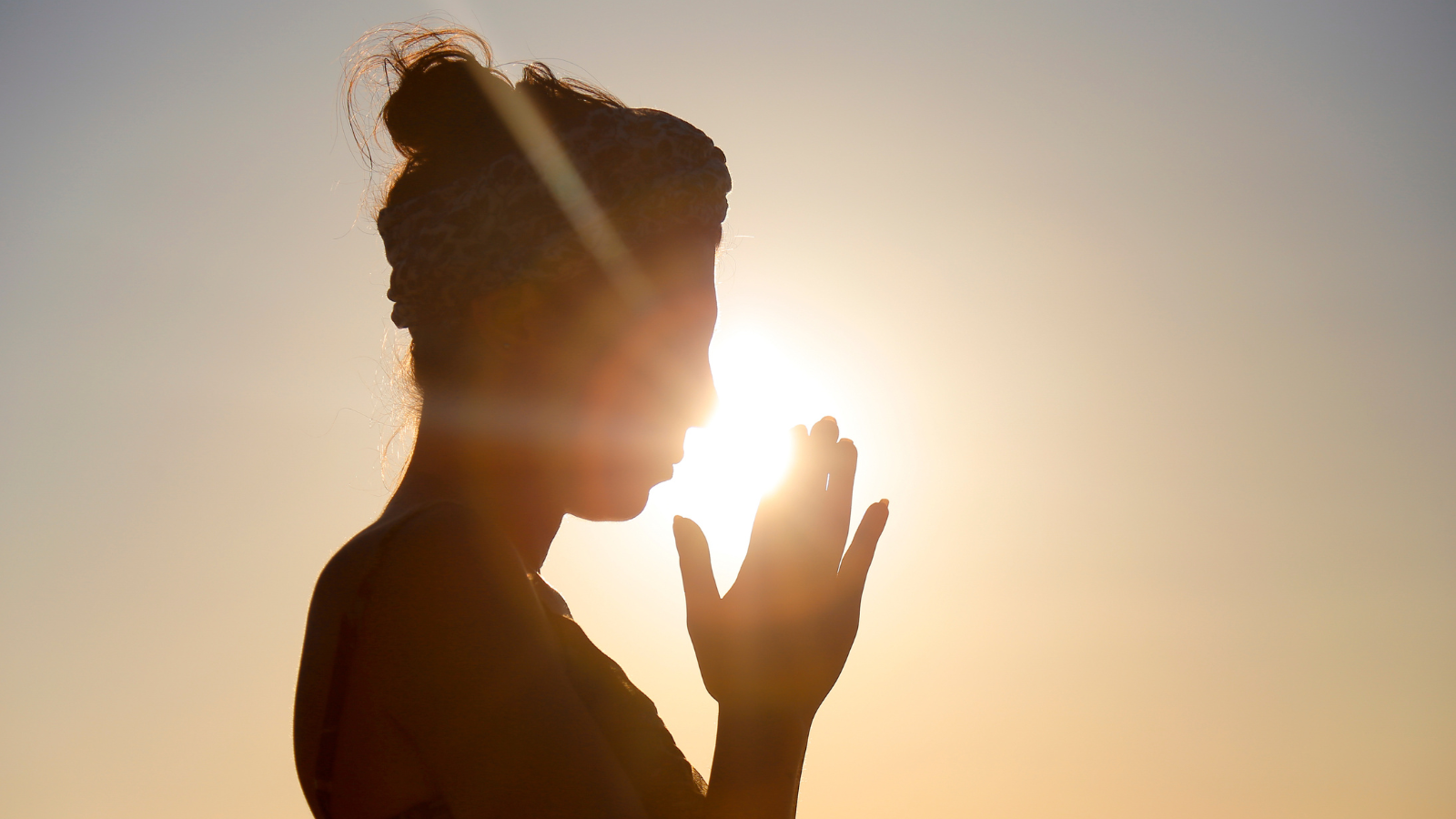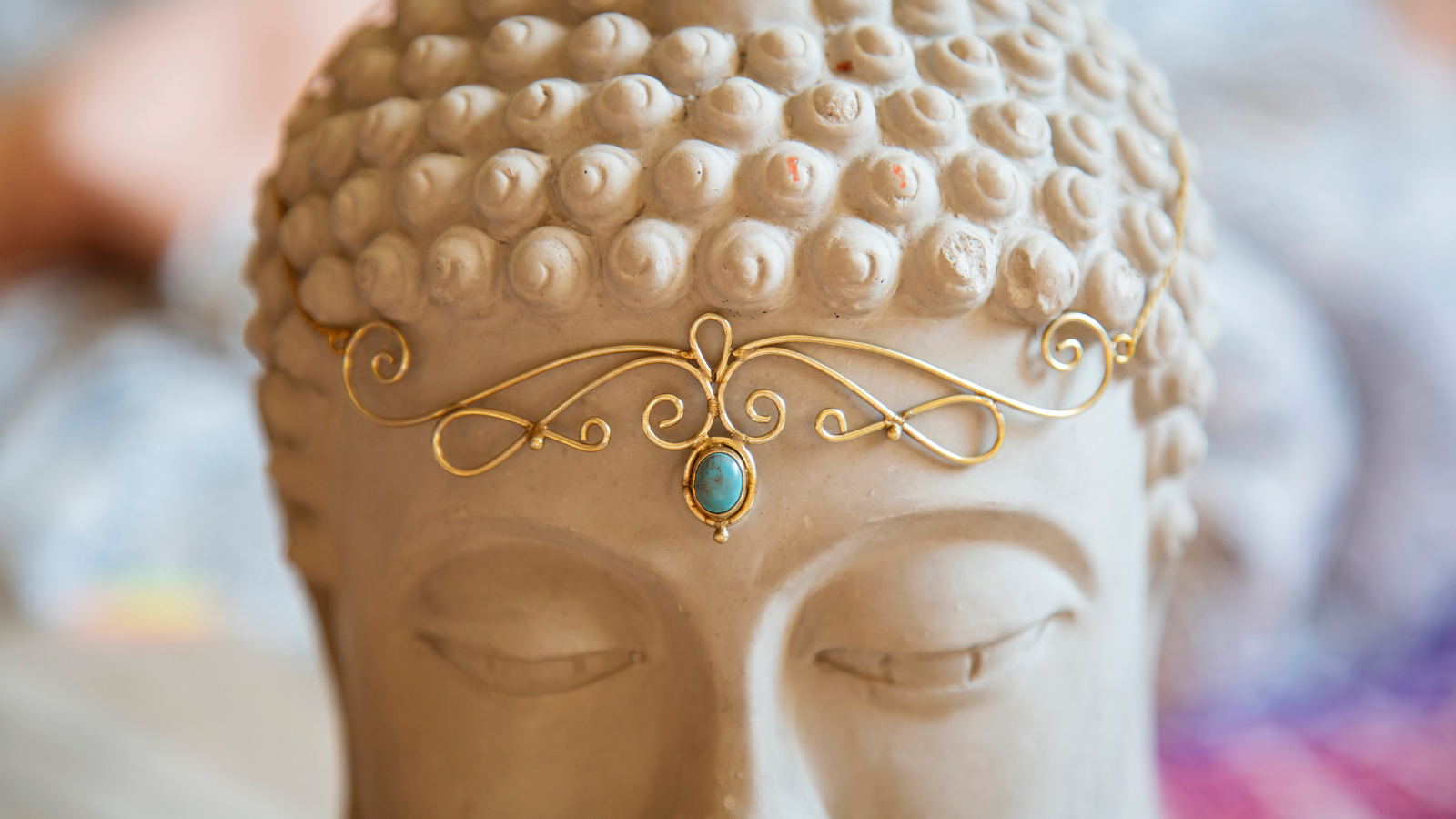Yoga’s Yamas: Relief from Stress and Anxiety

Article At A Glance
“Yoga’s Yamas contain essential advice for daily/good living. As they offer a map or guidance that allows us to have enhanced emotional and mental well-being and a more fulfilling and meaningful life, Yamas serve as the GPS for our lives. Practicing the Yamas leads to greater happiness and spiritual fulfillment not only for the individual but also to those around him/her.” —Ram Rao
As Ram stated so well in the quote above, the Yamas are yoga’s guiding principles for conducting yourself in all your relationships, within your community, and with the world at large. But for many years, I’ve heard from a variety of yoga scholars two different basic explanations of the purpose for these restraints (the literal meaning of “Yama”) or great vows.
Yamas: Ethical Precepts or Gateway to Awakening?

The first is that they are ethical guidelines, and practicing them enables you to become a better person, one who is worthy of achieving enlightenment. For example, Gandhi practiced non-violence (Ahimsa) through passive resistance in his political work and vegetarianism in his personal life as ethical practices.
Second, they are a set of practices that can help you cultivate equanimity by reducing the conflict in your life and within yourself. As Georg Feuerstein says:
“For as long as we pursue a lifestyle that falls short of these moral virtues, our energies are scattered, and we continue to harvest the negative repercussions of our actions.”
This, too, is considered a necessary step on the path to enlightenment because the idea is that you need to be calm and stable to focus entirely on your practices.
Because I’m not a yoga scholar, I don’t have an opinion on which of those theories is more valid, so instead, I simply accept both of them. But in my writing, I tend to leave others to explain how the Yamas make you a good, pure, and worthy person and to write more about how they enable you to cultivate equanimity. Mostly that’s because I think the second way of seeing them is much less often discussed.
How the Yamas Can Quell Stress and Anxiety

In the past, I’ve written about how Yoga’s Yamas reduce difficulty and drama in your life in general. This makes it easier for you to cultivate equanimity and contentment. Today I will specifically address how they can decrease stress and anxiety.
In general, I believe that having a calmer life can decrease your anxiety because chronic stress is one of the main causes of anxiety. Imagine a world where everyone stopped harming each other, lying, stealing, cheating on their partners, or taking more than their share. Some bad things would still happen, but wouldn’t the world be calmer, less stressful, and less anxiety-provoking?
There is a selection of Yamas that I think could be particularly helpful for reducing anxiety and stress. You can use these as guidelines for making choices for how to take action or how to live your life in general. And you can use them to cultivate opposite qualities when you notice you’re spiraling into anxious thought patterns. These Yamas are not all from the Yoga Sutras, by the way. The five listed in that text are just a drop in the bucket.
How to Practice Yoga’s Yamas to Relieve Stress and Anxiety

Non-Violence (Ahimsa)
Ahimsa is considered the most fundamental Yama. It includes non-violence in thought and action and covers your relationship to all living things. Ahimsa also means “non-harming,” so it includes refraining from actions or thoughts that harm another, whether physically, mentally, or emotionally. Practicing non-harming also means refraining from harming yourself.
The negative consequences of violent and harmful acts are clear in current events and history, as well as in personal stories. Over and over, we observe how one act of violence or harm leads to another and then another. This creates a toxic environment, which in general, causes chronic stress. And specifically, this toxic environment can cause anxiety over your own safety and the safety of those you care about.
So practicing non-violence and non-harming in your life helps foster both your own inner peace and peace in your family and inner circle. While you may not be able to have a big influence in your larger community, you are likely at least to have an influence on your home life and personal relationships.
Truthfulness (Satya)
Truthfulness includes practicing honesty in action, speech, and thought. Lying or misleading others is a form of harm because it violates the trust others have in us. And so many of the conflicts between us, including violence, are the result of keeping secrets and then telling lies to cover them up
I also think that lying causes a lot of stress and anxiety directly. You probably have anxiety about being found out and about trying to keep track of which lies you’ve told to and who you’ve told them to.
So like practicing non-violence, practicing truthfulness helps foster both inner peace and reduces conflicts in your relationships. However, because ahimsa is foremost Yama, you always need to consider non-harming when you practice truthfulness. Use compassion when you speak and aim to cause the least harm possible, even remaining silent if necessary.
Non-Stealing (Asteya)
Stealing, of course, means taking things that belong to others, including both material things and ideas, such as taking credit for someone else’s work. Of course, stealing is not just wrong on its own, but it is a form of harm. It violates the person you steal from, leading to other types of harm of many other kinds, including lies, violence, betrayal, and so on, in an attempt to cover up the original crime.
So for those who steal, there will be stress and anxiety about being caught or found out and about what the consequences of being caught might be. I know someone who was plagiarizing on a regular basis and who had more than one panic attack after someone close to him discovered what he was up to.
Asteya also means “non-coveting” and “non-desire.” Even if you don’t commit crimes to obtain the objects you desire, coveting material goods can cause you to overspend and even go into debt, which is stressful for you and can be ruinous for your family. Imagine the anxiety you would start to feel when you overspend or go into debt.
Or maybe the desire for material possessions or even just “success” simply means you work at a stressful, unsatisfying job. And in general, being in a state of desire for what you don’t have creates a cycle of dissatisfaction. This is true because what you have is never enough. You’re always looking to acquire more. We all know how that can lead to chronic stress.
Practicing Asteya means cultivating contentment with what you have and what you don’t have and letting go of these desires.

Sexual Restraint (Brahmacharya)
This is a complex topic for our culture. The original meaning in the Yoga Sutras is “chastity,” which means refraining from sex completely. That’s because the yogic path described in the Yoga Sutras was intended for unmarried practitioners and separated from the rest of society. So in modern times, for us ordinary “householders,” we consider Brahmacharya to be sexual responsibility. For example, B.K.S. Iyengar says that for him practicing Brahmacharya meant being faithful to his wife.
Not practicing sexual restraint is a form of harm. If you are reckless in your sexual conduct, well, we’re back to the soap opera territory with lies, jealousy, pain, and even violence. (I learned this the hard way when I experimented with “free love” back in the ’70s.) And, of course, these days, we understand the damage that is caused by sexual abuse in all its forms, whether that means sexual harassment or predatory behavior by those in power.
I also think that being sexually irresponsible, such as cheating on your partner or having sex with people you know you should not have sex with, causes a lot of stress and anxiety directly. You probably have anxiety about being found out and about what might happen if you are.
How you interpret sexual responsibility depends on your personal commitments, your religion, if you have one, and the culture in which you live. But I think if you put your mind to it, you’ll know how to practice sexual responsibility in your everyday life.
Forgiveness (Kshama)
This is a Yama you can practice when there is someone who has harmed you or people you care about. In addition to meaning forgiveness, Kshama also means letting go, releasing time, and living in the present. Rather than being a form of forgiveness that includes confronting or reconciling with the person or people who caused you harm, it is a type of forgiveness that you practice within yourself so you can “release” the pain associated with the harm that was done to you and move on from it.
Practicing forgiveness can help you let go of stressful feelings about people who caused the harm and release you from reliving bad memories, which can trigger anxiety.
Of course, if you have harmed yourself or done something that you regret, you can also forgive yourself.
Compassion (Daya)
This Yama means both kindness and compassion, and it includes both feeling kindness and compassion and taking kind and compassionate actions. Practicing compassion for and kindness toward those you have difficulty with can improve your relationships. This will reduce the conflicts you have with them. In turn, this reduces your stress levels because living and/or working in conflict is much more stressful and filled with anxiety about what might happen next than when everyone is getting along.
I also think this Yama is particularly helpful when considering your relationship with yourself. Many of us have anxiety because of all the expectations we have for what we need to achieve or take care of. Cultivating compassion for yourself can help you let go of unrealistic expectations and accept that you’re only human.
For example, lately, I’ve felt overwhelmed with work and other things I need to do. I could slip into anxiety if I let myself feel like it will be the end of the world if I don’t get everyone on my to-do list accomplished. Instead, I try to cultivate compassion for myself for not being able to live up to what are probably unrealistic expectations for myself. And I treat myself kindly by doing my yoga stress management and self-care practices rather than just working all the time.
Also, read...
Yoga to Soothe Mind and Body: How to Practice Supported Pigeon Pose
Study: Yoga Can Help Foster Greater Mind-Body Integration – The Four Stages of Body Awareness
What Your Body Tells You Can Protect You From Stress, Study Suggests
Related courses

Nina Zolotow, RYT 500, the author of the forthcoming book “Yoga for Times of Change” and the Editor-in-Chief of the Yoga for Healthy Aging blog, is both a yoga writer and a yoga teacher. She trained to be a yoga teacher at The Yoga Room in Berkeley, California, has studied yoga therapy with Shari Ser and Bonnie Maeda, and is especially influenced by the teachings of Donald Moyer. She also studied extensively with Rodney Yee and is inspired by the teachings of Patricia Walden on yoga for emotional healing. Her special area of expertise is yoga for emotional well-being (including yoga for stress, insomnia, depression, and anxiety). She teaches workshops and series classes on yoga for emotional well-being, stress management, better sleep, home practice, and cultivating equanimity.
Nina is the co-author with Baxter Bell of Yoga for Healthy Aging: A Guide to Lifelong Well-Being and co-author with Rodney Yee of Yoga: The Poetry of the Body (with its companion 50 Card Practice Deck) and Moving Toward Balance. She is also the author of numerous articles on yoga and alternative medicine.



